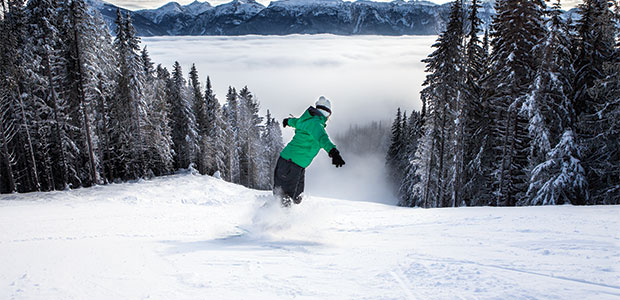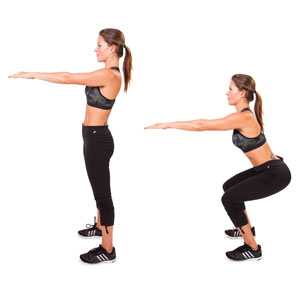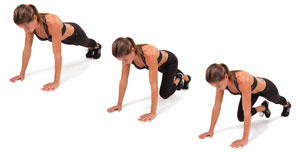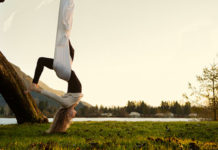
Listen up, weekend warriors! If you leave exercise for the weekends, you may be injury-prone. Learn how to minimize your risk.
Dealing with an injury is frustrating. Our bodies tend to recover more slowly as we age, and many of us have careers and families that require us to be injury free. Whether you’ll be skiing, snowboarding, or running on icy trails this winter, take steps to ensure you’re ready for new challenges.
Winter workout woes
At this time of year, we’re typically less active due to shortened days and poor weather. Not to mention that the holiday season can be chaotic. Sometimes, we end up leaving exercise for the weekends—and this can be problematic if our bodies aren’t adequately prepared for our activity of choice.
It’s important to perform preventive maintenance throughout the week to keep your body game ready. Otherwise, you leave yourself susceptible to getting injured. Some of the main culprits of injury include
- lack of strength and conditioning
- insufficient warm-up
- decreased flexibility
- not knowing your personal limits
So what can you do to stay injury free this winter?
Know your limitations
It’s best to start slow and at a low intensity. This goes for exercise, sports, and day-to-day activities. Gradually increase the intensity of your workouts by no more than 10 percent per week to prevent unnecessary stress to your muscles and joints.
Most importantly, be realistic! You can’t expect to be a couch potato for six months and then perform to your full potential at the start of ski season.
Rest up
Don’t be afraid to question if you’re physically and mentally ready for the challenge at hand. Recovery is just as important as work, so make sure to schedule a rest day or take a day off from physical activity if you’re not feeling well.
Be patient
Patience truly is a virtue, especially when it comes to learning new sports or upping your fitness level. Learn the fundamentals and start slowly. It takes time for muscles to adapt to new activities.
If you experience muscle soreness for more than 48 hours after an activity or one-sided discomfort, it may indicate early injury.
Stay hydrated
We typically think of dehydration as a summer problem. In reality, it’s easy to become dehydrated in the winter, especially during intense outdoor activities. Muscles that are well hydrated not only function more effectively but are also less susceptible to injury.
Monitor signs of dehydration
If you’re unsure about whether or not you’re dehydrated, look for signs such as
- muscle cramping
- headache
- drowsiness
- nausea
- vomiting
- dark urine
Prevent dehydration
These tips will help you hydrate like a pro.
- Carry a water bottle with you and drink water before, during, and after exercise.
- Eat fruits and vegetables with a high concentration of water, such as cucumbers and tomatoes, and avoid excessive caffeine intake.
- Choose the right clothing for your activity and take into account the conditions. Excessive layers during an intense trail run or snowshoe outing will likely cause you to sweat too much!
Train for joint stability and mobility
Joint stability refers to the ability to control joint movement or position when an external force is applied, while mobility refers to range of motion around a joint and whether or not it can move freely. Both are important for overall joint health.
Many winter activities depend on having sufficient stability and mobility in certain joints. Skiing, for example, requires a stable pelvis and core. If these areas are tight or weak, you may resort to a position that puts stress on another area of the body.
Hit the gym
Spend time preparing your body for activities beforehand. This means hitting the gym and performing preventive maintenance to improve your overall strength. If you’re an avid skier or snowboarder, perform exercises that will help build leg strength and improve core and joint stability.
Next time you’re in the gym, focus on exercises that incorporate full-body movements, plyometrics, and core stability training.
Work your entire body
Full-body exercises such as squats and lunges improve muscle control, overall strength, and mobility. Plyometrics are exercises that rapidly stretch and contract the muscle, such as an explosive jump. They teach you how to land safely and thus improve joint stability. A strong core improves balance and stability, which can prevent falls during activity.
Warm up properly
A dynamic warm-up is a great way to prepare your body for activity. It consists of movements designed to loosen tight muscles, increase blood flow, and activate your nervous system. In addition, dynamic stretching warms up the joints, maintains current flexibility, and reduces muscle tension—all of which will reduce your chance of injury.
Move more at work
If your job requires you to sit for long periods of time, get up and move around at least once every hour. Try to incorporate a few dynamic exercises during these breaks to keep your muscles active throughout the day. This will contribute to healthier movement during times of activity.
Go slow
Make sure to progress gradually through a warm-up, with enough intensity to increase muscle and core temperature. Include at least five exercises that will help stimulate the major muscle groups throughout your body and mimic movements in your activity.
Enjoy it
Have fun during your warm-up! If you and a friend haven’t hit the slopes for a while, going through a series of dynamic exercises will give you time to focus and discuss what your game plan is for the day.
Warm-ups for winter activity
Here are a few dynamic exercises that you can do before any winter activity. Complete 10 to 12 repetitions and two sets of each exercise.
Lateral Lunge

- From a standing position, step out laterally to the right.
- Drive your hips back and bend your right knee to 90 degrees.
- Keep your toes pointed straight and feet flat.
- Ensure your right knee does not extend over your toes.
- Return to a standing position and repeat on the opposite side.
Body-weight squats

- Stand tall and extend your arms straight out in front of you with your palms down and feet flat on the ground.
- Engage your core, bend your knees, and drive your hips back, making sure to keep your back straight.
- Keep your shins vertical and imagine sitting down in a chair.
- Return to starting position and squeeze your glutes at the top.
Jump squats

- Start in a regular squat with your core engaged.
- Drive your hips forward and jump up explosively.
- Land in a stable squat position with your knees bent and hips back.
Reverse lunge with overhead reach

- Stand tall with your chest up, shoulders back, and core engaged.
- Step backward with your right leg until your left knee is bent at least 90 degrees.
- Reach upward and over to the left with your right arm.
- Return to starting position and repeat on the opposite side.
Mountain climbers

- Get into a push-up position with your feet together and legs straight.
- Squeeze your butt and engage your core to neutralize your hips.
- Drive your knees one at a time toward your chest in a controlled motion.




































